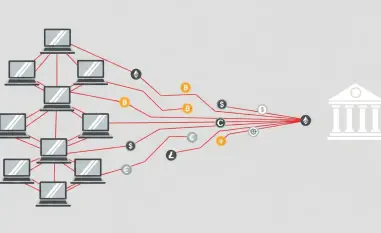In a rapidly evolving digital landscape, artificial intelligence (AI) has made significant strides, offering new avenues for innovation and creativity. Among its various applications, AI-driven video generation tools have garnered considerable interest, capturing the attention of both tech enthusiasts and professionals. However, as is often the case with technological advances, these tools are increasingly being exploited by cybercriminals, creating a fertile ground for developing sophisticated cyber threats. A recent cyber campaign, widely believed to be spearheaded by the hacking collective UNC6032, highlights the potential dangers associated with these AI video tools. This group has ingeniously used the growing fascination with generative AI products to seed a malicious operation, distributing malware camouflaged as legitimate AI services.
The Anatomy of the Cyber Campaign
UNC6032’s Exploitative Strategy
The intricate strategy employed by UNC6032 centers on leveraging the newfound interest in AI video generators to effectively disguise malicious intent. By setting up counterfeit websites, masquerading as reputable AI video services like Luma AI, Canva Dream Lab, and Kling AI, the hackers have managed to deceive users into downloading harmful software. These fraudulent platforms distribute malware under the pretense of delivering video content, thus exploiting users’ trust in emerging technologies.
The campaign’s reach is unprecedented, supported by a vast network of social media advertisements strategically placed on platforms such as Facebook and LinkedIn. These ads often originate from either fake accounts created by the attackers or hijacked legitimate profiles, adding an additional layer of authenticity to the deception. The moment users interact with these ads, they are directed to the fraudulent websites. Although seemingly legitimate, these sites are designed to deliver a preset malware payload, which includes the STARKVEIL dropper, leading to further installations of other malicious software like XWORM, FROSTRIFT backdoors, and GRIMPULL downloader. These tools are meticulously developed for data theft and infiltration, embodying a new wave of cyber threats.
The Risks of Fake AI Video Services
The proliferation of fake AI video services poses a significant risk to individuals and organizations alike. These deceptive platforms appear genuine, tricking users into interacting with them and unwittingly compromising their data. The hack relies heavily on social media’s reach, where millions of unsuspecting users are targeted, predominantly within European nations. While the number of ads and sites associated with UNC6032 is immense, the actual impact concerning infected users remains partly speculative.
Meta, the parent company of Facebook, has emphasized that while exposure is substantial, the true victim count might not match the displayed figures. Nonetheless, the magnitude of this campaign is a reminder of the potential threats lurking in the digital sphere, especially when new technologies are involved. As individuals and businesses flock to embrace AI tools, safeguarding against such multifaceted threats is crucial to prevent malicious exploitation.
Techniques and Tactics of the Hacking Group
Dynamic Domain Manipulation
The sophistication of UNC6032’s campaign is further highlighted by its dynamic approach to domain manipulation. Instead of relying on static web addresses, the group employs a strategy that continuously rotates domains to circumvent detection by ad platforms and cybersecurity mechanisms. This rapid turnover of domain registrations, sometimes occurring mere days apart, maintains their operation’s momentum, ensuring a steady stream of potential victims while persistently evading countermeasures.
Such agility complicates the work of cybersecurity professionals, who must contend with constantly shifting targets in their efforts to thwart the group’s activities. Despite these challenges, it underscores the need for more agile and adaptive strategies in cybersecurity defenses. Understanding the mechanisms behind these exploitations is crucial in developing robust countermeasures to protect against similar methodologies employed by other cybercriminals.
The Multi-Layered Malware Payload
Delving deeper into UNC6032’s operational framework reveals a multitiered malware deployment designed for persistence. The initial vector, the STARKVEIL dropper, serves as a gateway for installing various malware types, each with a role in maintaining the infiltration’s longevity. This redundancy in the payload’s design ensures that even if one component faces neutralization by security systems, others can continue to operate undetected.
Surviving layers of defense is a testament to the advanced engineering behind these cyber threats. The persistent nature of such attacks necessitates a proactive stance in both individual and organizational cybersecurity practices, extending beyond mere detection to effective elimination of all threat layers. Comprehensive cybersecurity strategies are imperative, focusing not only on direct threats but also on anticipatory measures to identify and neutralize malicious activities before they fully manifest.
Implications and Defensive Measures
The Need for Enhanced Awareness
The insights from this elaborate hacking campaign underscore a critical takeaway: awareness and education remain among the most potent defenses against cyber threats. Both personal users and corporate entities must exercise caution when engaging with novel AI tools, specifically by ensuring the authenticity of services before proceeding with any interactions. Validating domain legitimacy and recognizing signs of deceit can significantly mitigate exposure to potentially harmful operations.
As the adoption of AI tools becomes more ubiquitous, integrating cybersecurity education into everyday technology usage could substantially reduce vulnerabilities. Users equipped with the knowledge to recognize and respond to deceptive practices play a vital role in maintaining digital integrity against stealthy adversaries like UNC6032.
A Future Outlook on Cybersecurity Innovations
UNC6032 employs a devious strategy to exploit the surge in interest surrounding AI video generators, cleverly disguising their malevolent purposes. By creating fake websites that appear as reputable AI video services, such as Luma AI, Canva Dream Lab, and Kling AI, these hackers successfully trick users into downloading malware. They cleverly exploit trust in new technologies, distributing harmful software under the guise of video content.
This campaign’s scope is exceptional, backed by an extensive social media ad network, strategically positioned on sites like Facebook and LinkedIn. Many of these ads come from fake accounts or compromised legitimate profiles, adding credibility to their scheme. Once users engage with these ads, they’re led to deceptive websites. Despite an authentic appearance, these sites deliver malware, including the STARKVEIL dropper, causing the installation of dangerous software like XWORM, FROSTRIFT backdoors, and GRIMPULL downloader. These tools are meticulously crafted for data theft, heralding a new era of cyber threats.













